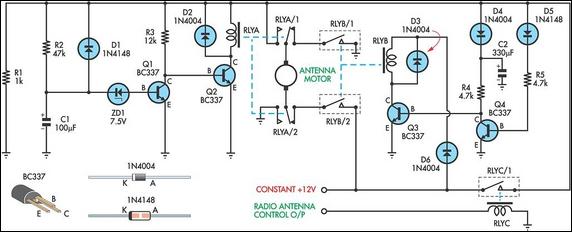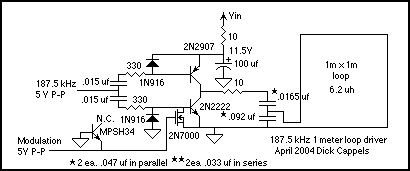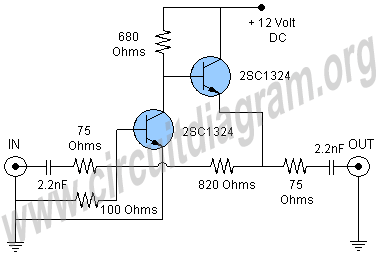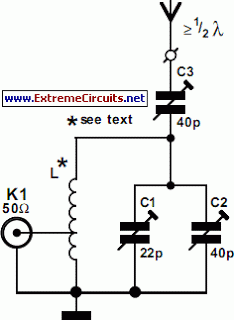
15db uhf tv antenna booster
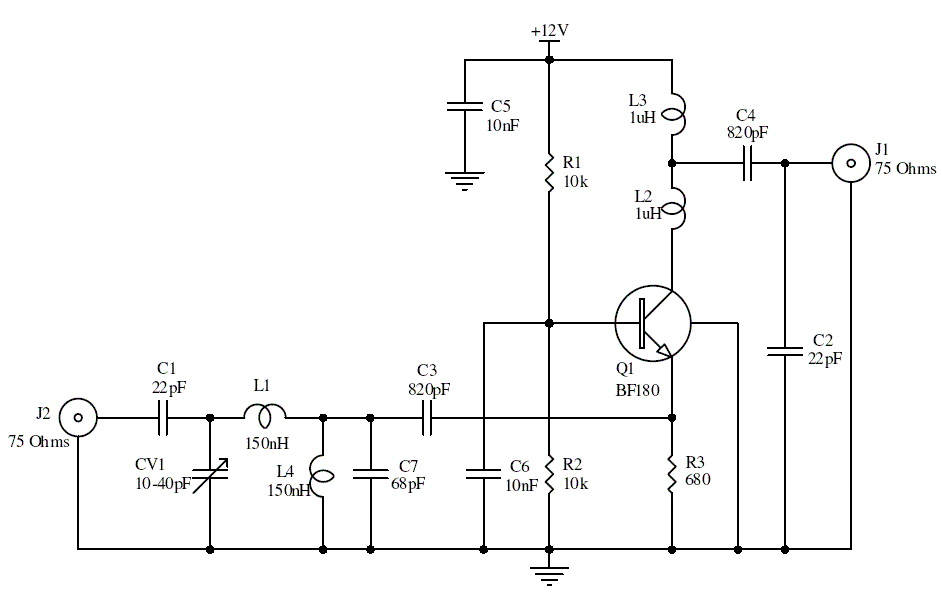
This is a UHF band TV antenna preamplifier circuit with a gain of 15 dB. It is designed using the BF180 UHF transistor. The input stage consists of a band-pass filter implemented with components C1, CV1, L1, L4, C7, and C3. The output stage is a common-base voltage amplifier with low input impedance for impedance matching. The inductors L1 to L4 are configured to enhance the Q-factor. After assembly, it should be enclosed in a sturdy metal box, and the ground of the circuit should be connected to the box to reduce noise interference.
This UHF band preamplifier circuit is designed to enhance the reception of television signals in the UHF frequency range. The choice of the BF180 transistor is crucial, as it provides the necessary amplification characteristics suitable for UHF applications. The circuit employs a band-pass filter at the input stage, which is essential for selecting the desired frequency range while attenuating unwanted signals. The components C1, CV1, L1, L4, C7, and C3 work in conjunction to create a filter that allows only the UHF signals to pass through efficiently.
The output stage utilizes a common-base configuration, which is advantageous due to its low input impedance. This characteristic allows for better matching with the antenna, ensuring maximum power transfer. The inductors L1 through L4 are strategically placed to optimize the circuit's Q-factor, which is a measure of the selectivity and quality of the filter. A higher Q-factor results in a sharper frequency response, enhancing the circuit's ability to isolate the desired UHF signals from interference.
After the assembly of the circuit, it is essential to house it in a robust metal enclosure. This enclosure not only protects the components from physical damage but also serves to minimize electromagnetic interference (EMI) from external sources. Grounding the circuit to the metal box is critical, as it helps reduce noise and improves overall performance. Proper grounding practices ensure that any stray signals are diverted away from the sensitive components of the preamplifier, thereby enhancing the signal clarity and strength.
In conclusion, this UHF band preamplifier circuit is a well-designed solution for improving television signal reception. Its careful selection of components and configuration contributes to its effectiveness in amplifying UHF signals while minimizing noise and interference.This is an UHF bandage TV antenna preamplifier circuit With 15dB accretion to body easily. It is formed based on BF180 UHF Transistor. The aboriginal date is an bandage canyon clarify complete by the C1, CV1, L1, L4, C7 and C3, the additional date is a base-common voltage amplifier with low ascribe impedance to match. Body the L1 ~ L4 as air amoun t braid to access aerial Q-Factor. After assembling, backpack it into a able brownish box and affix the arena of the ambit to the box to abate babble effect. 🔗 External reference
This UHF band preamplifier circuit is designed to enhance the reception of television signals in the UHF frequency range. The choice of the BF180 transistor is crucial, as it provides the necessary amplification characteristics suitable for UHF applications. The circuit employs a band-pass filter at the input stage, which is essential for selecting the desired frequency range while attenuating unwanted signals. The components C1, CV1, L1, L4, C7, and C3 work in conjunction to create a filter that allows only the UHF signals to pass through efficiently.
The output stage utilizes a common-base configuration, which is advantageous due to its low input impedance. This characteristic allows for better matching with the antenna, ensuring maximum power transfer. The inductors L1 through L4 are strategically placed to optimize the circuit's Q-factor, which is a measure of the selectivity and quality of the filter. A higher Q-factor results in a sharper frequency response, enhancing the circuit's ability to isolate the desired UHF signals from interference.
After the assembly of the circuit, it is essential to house it in a robust metal enclosure. This enclosure not only protects the components from physical damage but also serves to minimize electromagnetic interference (EMI) from external sources. Grounding the circuit to the metal box is critical, as it helps reduce noise and improves overall performance. Proper grounding practices ensure that any stray signals are diverted away from the sensitive components of the preamplifier, thereby enhancing the signal clarity and strength.
In conclusion, this UHF band preamplifier circuit is a well-designed solution for improving television signal reception. Its careful selection of components and configuration contributes to its effectiveness in amplifying UHF signals while minimizing noise and interference.This is an UHF bandage TV antenna preamplifier circuit With 15dB accretion to body easily. It is formed based on BF180 UHF Transistor. The aboriginal date is an bandage canyon clarify complete by the C1, CV1, L1, L4, C7 and C3, the additional date is a base-common voltage amplifier with low ascribe impedance to match. Body the L1 ~ L4 as air amoun t braid to access aerial Q-Factor. After assembling, backpack it into a able brownish box and affix the arena of the ambit to the box to abate babble effect. 🔗 External reference
